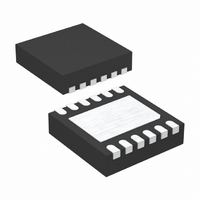LT3500IDD#PBF Linear Technology, LT3500IDD#PBF Datasheet - Page 15

LT3500IDD#PBF
Manufacturer Part Number
LT3500IDD#PBF
Description
IC REG STP-DWN 2A 12-DFN
Manufacturer
Linear Technology
Type
Step-Down (Buck)r
Datasheet
1.LT3500EDDPBF.pdf
(28 pages)
Specifications of LT3500IDD#PBF
Topology
Step-Down (Buck) (1), Linear (LDO) (1)
Function
Any Function
Number Of Outputs
2
Frequency - Switching
500kHz ~ 2.4MHz
Voltage/current - Output 1
0.8 ~ 38.9 V, 2A
Voltage/current - Output 2
Adjustable, 13mA
W/led Driver
No
W/supervisor
No
W/sequencer
No
Voltage - Supply
3 V ~ 36 V
Operating Temperature
-40°C ~ 125°C
Mounting Type
Surface Mount
Package / Case
12-DFN
Current - Output
2A
Voltage - Output
0.8 ~ 38.9 V
Voltage - Input
3 ~ 36 V
Internal Switch(s)
Yes
Synchronous Rectifier
No
Lead Free Status / RoHS Status
Lead free / RoHS Compliant
Power - Output
-
Available stocks
Company
Part Number
Manufacturer
Quantity
Price
APPLICATIONS INFORMATION
The frequency, V
current requirement of the LT3500 along with the input
supply source impedance, determine the energy storage
requirements of the input capacitor. Determine the worst-
case condition for input ripple current and then size the
input capacitor such that it reduces input voltage ripple to
an acceptable level. Typical values for input capacitors run
from 10μF at low frequencies to 2.2μF at higher frequencies.
The combination of small size and low impedance (low
equivalent series resistance or ESR) of ceramic capacitors
make them the preferred choice. The low ESR results in
very low voltage ripple and the capacitors can handle plenty
of ripple current. They are also comparatively robust and
can be used in this application at their rated voltage. X5R
and X7R types are stable over temperature and applied
voltage, and give dependable service. Other types (Y5V and
Z5U) have very large temperature and voltage coeffi cients
of capacitance, so they may have only a small fraction of
their nominal capacitance in your application. While they
will still handle the RMS ripple current, the input voltage
ripple may become fairly large, and the ripple current may
end up fl owing from your input supply or from other by-
pass capacitors in your system, as opposed to being fully
sourced from the local input capacitor. An alternative to a
high value ceramic capacitor is a lower value along with
a larger electrolytic capacitor, for example a 1μF ceramic
capacitor in parallel with a low ESR tantalum capacitor.
For the electrolytic capacitor, a value larger than 10μF will
be required to meet the ESR and ripple current require-
ments. Because the input capacitor is likely to see high
surge currents when the input source is applied, tantalum
capacitors should be surge rated. The manufacturer may
also recommend operation below the rated voltage of the
capacitor. Be sure to place the 1μF ceramic as close as
possible to the V
noise immunity.
IN
IN
and GND pins on the IC for optimal
to V
OUT1
ratio, and maximum load
A fi nal caution regarding the use of ceramic capacitors for
input bypassing. A ceramic input capacitor can combine
with stray inductance to form a resonant tank circuit. If
power is applied quickly (for example, by plugging the
circuit into a live power source) this tank can ring, doubling
the input voltage and damaging the LT3500. The solution is
to either clamp the input voltage or dampen the tank circuit
by adding a lossy capacitor in parallel with the ceramic
capacitor. For details see Application Note 88.
Output Capacitor Selection
Typically step-down regulators are easily compensated with
an output crossover frequency that is 1/10 of the switch-
ing frequency. This means that the time that the output
capacitor must supply the output load during a transient
step is ~2 or 3 switching periods. With an allowable 5%
drop in output voltage during the step, a good starting
value for the output capacitor can be expressed by:
Example:
2A
The calculated value is only a suggested starting value.
Increase the value if transient response needs improvement
or reduce the capacitance if size is a priority. The output
capacitor fi lters the inductor current to generate an output
with low voltage ripple. It also stores energy in order to
satisfy transient loads and to stabilize the LT3500’s control
loop. The switching frequency of the LT3500 determines
V
C
C
OUT1
VOUT1
VOUT1
= 3.3V, Frequency = 1MHz, Max Load Step =
=
=
Frequency • 0.05 • V
1MHz • 0.05 • 3.3
Max Load Step
2
= 12μF
OUT1
LT3500
15
3500fc













